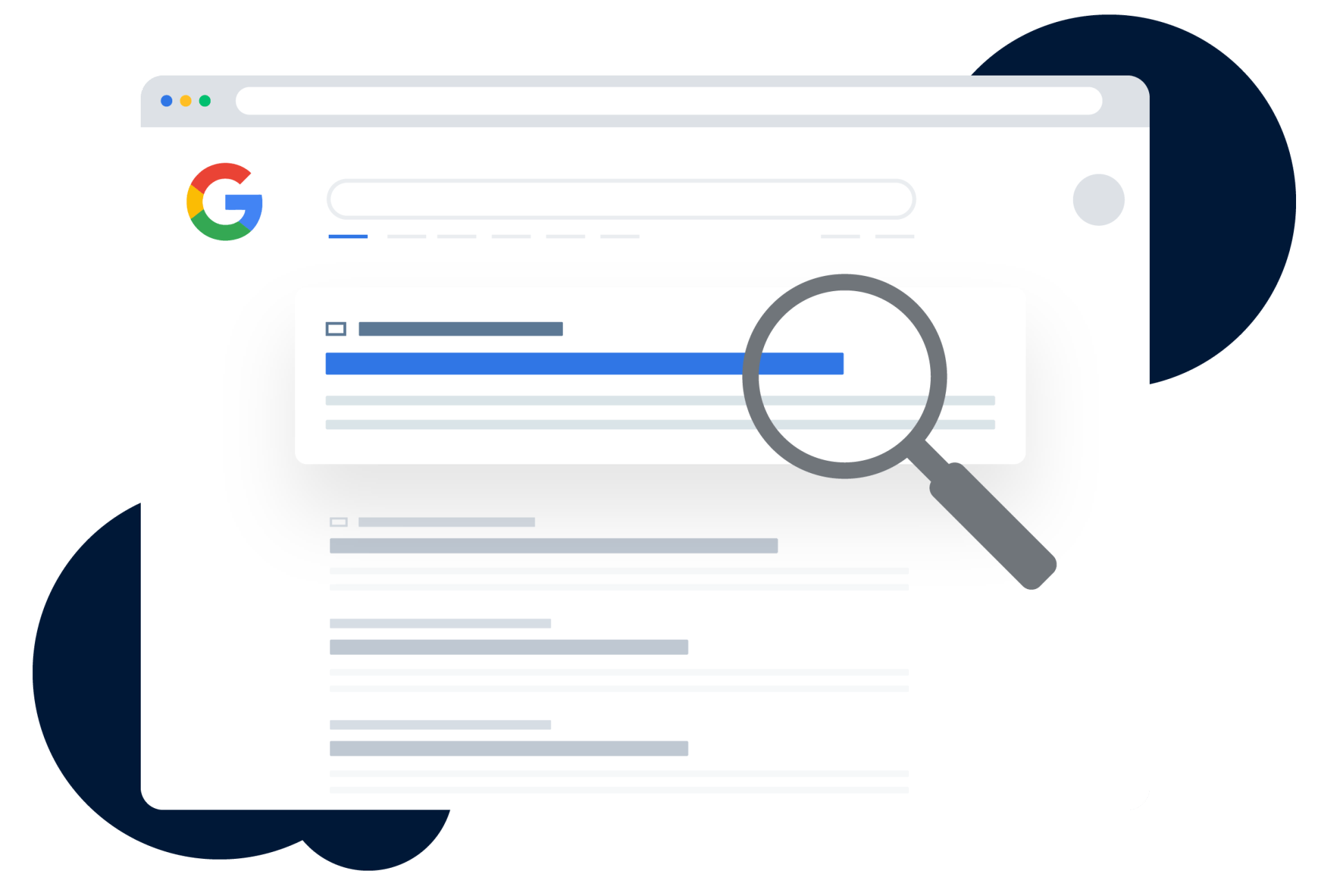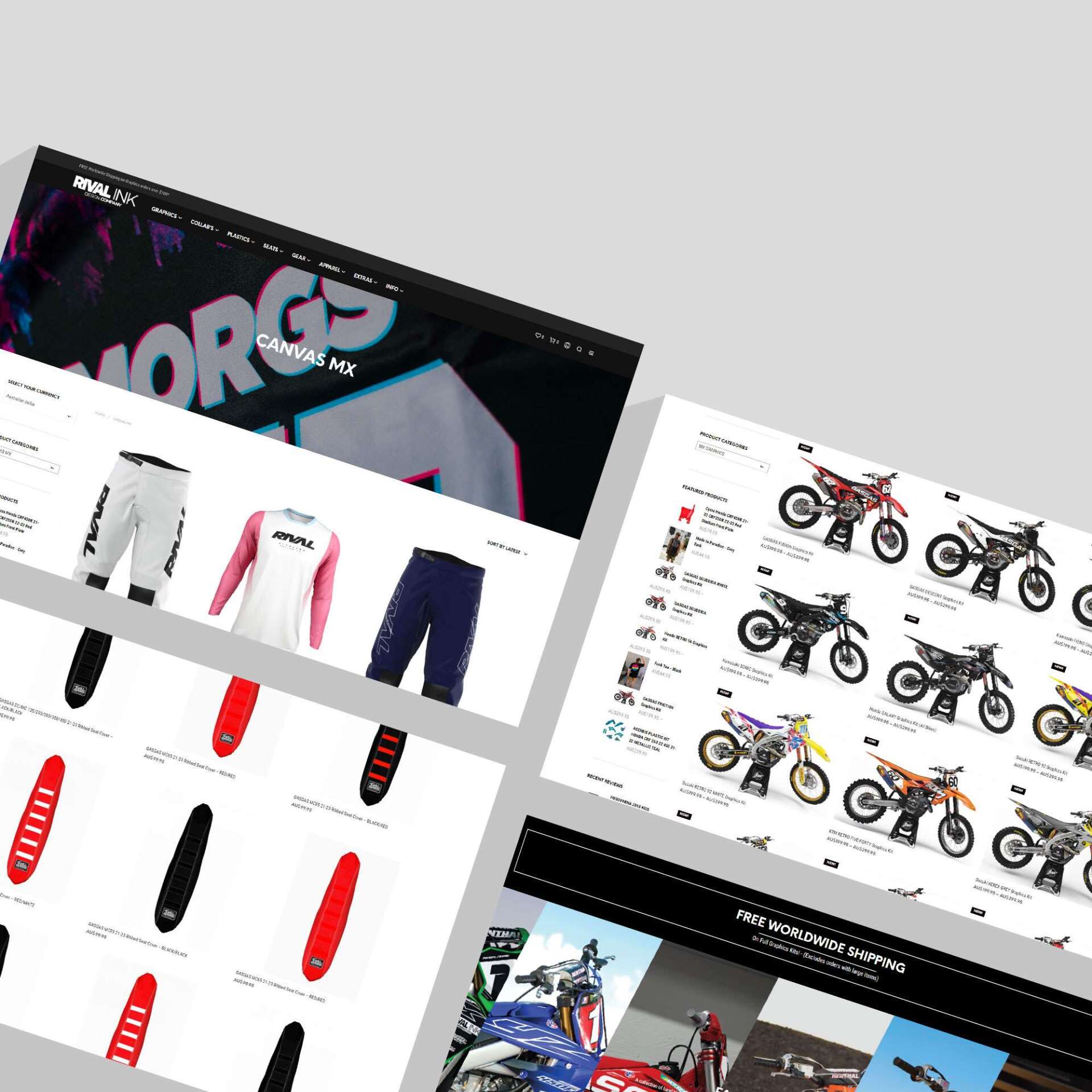User-Friendly Wins: Simple Ways to Improve Website Usability

Why Website Usability Improvements Drive Business Success
Website usability improvements are critical for creating digital experiences that convert visitors into loyal customers. In today's competitive digital marketplace, a website must do more than simply exist; it must perform. When a site successfully balances sophisticated visual appeal with intuitive functionality, it delivers an effortless and engaging user journey that drives measurable business results. A fundamental disconnect between design and usability costs organisations conversions, damages brand perception, and inflates customer support costs every day. Investing in usability is not merely an expense but a direct investment in customer satisfaction and revenue growth.
For immediate and sustainable impact, a strategic focus on the following key areas is essential:
Core Usability Principles:
- Accessibility: Ensure your site is functional and comprehensible for all users, including those with disabilities.
- Clarity: Remove all ambiguity from navigation, calls-to-action, and core messaging to reduce cognitive load.
- Credibility: Build and maintain trust through professional design, transparent policies, and social proof like testimonials.
- Recognition: Employ familiar layouts, standard icons, and conventional design patterns to make the user interface feel intuitive.
- Relevance: Precisely align all content and functionality with user intent and expectations to deliver immediate value.
Essential Technical Elements:
- Mobile responsiveness: With more than half of all web traffic originating from mobile devices, a seamless mobile experience is non-negotiable.
- Fast loading speeds: Pages should ideally load in under 2.5 seconds to prevent high bounce rates and user frustration.
- Clear navigation: A logical and predictable site structure with minimal clicks to key content is vital for user retention.
- Visual hierarchy: Strategically use size, colour, contrast, and white space to guide user attention towards the most important actions.
- Error prevention: Proactively fix broken links, validate forms, and provide helpful, guiding 404 pages to maintain a smooth user journey.
At RankingCo, we implement strategic website usability improvements that directly influence conversion rates, user retention, and overall brand equity. Our data-driven approach to optimising the user experience has consistently delivered measurable outcomes for clients, from start-ups to scaling enterprises, across Australia, New Zealand, the United States, and Canada.

The Core Principles of a Highly Usable Website
Building a highly usable website begins with a profound understanding of your users—their needs, frustrations, and ultimate goals. At RankingCo, our methodology is built upon the principle of user-centred design , a philosophy that places people at the heart of every strategic and technical decision. This approach draws from established Human-Computer Interaction (HCI) principles to create intuitive, efficient, and effortless digital experiences. By carefully mapping the customer journey , we ensure every interaction, from the initial landing page to the final conversion, is an opportunity to guide users seamlessly towards their objectives. This consistent focus on the user delivers stronger conversion rates, higher satisfaction, and improved brand loyalty.
Defining the Pillars: Accessibility, Clarity, and Credibility
Accessibility is the non-negotiable foundation of inclusive and ethical design. Building websites that work for everyone, including users with visual, auditory, motor, or cognitive impairments, creates a better, more robust experience for all. Adherence to the Web Content Accessibility Guidelines (WCAG) is not merely about compliance; it is a strategic imperative to reach your entire potential audience. Simple yet powerful implementations—such as providing descriptive alt text for all images, ensuring strong colour contrast for readability, enabling keyboard-only navigation, and including captions for video content—can dramatically expand your customer base and demonstrate corporate responsibility.
Clarity eliminates the cognitive friction and guesswork that frustrate users and lead to site abandonment. Your website's messaging must instantly and unequivocally answer three core questions: What do you offer? How does it benefit me? What should I do next? This is achieved through clear and logical navigation, unambiguous button labels (e.g., “Request a Quote” instead of “Submit”), and straightforward content organisation. By removing mental effort, we allow users to focus entirely on your value proposition, accelerating their path to conversion.
Credibility builds the essential trust that converts prospective visitors into confident customers. Professional design communicates competence, while authentic testimonials, case studies, and transparent communication demonstrate reliability and authority. Users make split-second judgements based on visual and contextual cues, including consistent branding, error-free content, secure connection indicators (HTTPS), and easily accessible contact information. You can explore more on building website credibility through strategic design.
The User's Journey: Recognition, Relevance, and Learnability
Recognition over recall is a fundamental usability heuristic. This principle leverages users' existing mental models from their extensive browsing habits. Placing logos, navigation bars, or search functions in expected locations reduces cognitive load and makes the interface feel immediately familiar. Standard conventions, such as shopping-cart icons in the top-right corner and hamburger menus on mobile, make navigation feel natural. Deviating from these established patterns without a compelling reason often creates unnecessary confusion and friction.
Relevance ensures that every piece of content directly serves your users' needs and search intent. This requires deep, data-informed research into your audience's motivations, pain points, and the language they use. Content that speaks directly to a user's specific problem or goal not only improves the browsing experience but also signals immense value to search engines. This is a critical factor for success, whether you are a local Brisbane business targeting a specific community or an international e-commerce store serving diverse markets.
Learnability focuses on making complex tasks feel simple and intuitive. The most effective interfaces require no instruction manual, guiding users naturally through processes with clear visual cues, logical flow, and immediate feedback. When users can accomplish their goals easily on their first visit and remember how to do so on subsequent visits, you have achieved true usability. Our guide on optimising user experience for better conversions explores these principles in greater detail.
Key Design and Content Elements That Impact Usability
Every single element on your website—from the smallest icon to the main heading—contributes to the overall user experience. At RankingCo, our extensive experience working with businesses across Australia, New Zealand, the US, and Canada has shown that effective website usability improvements demand a holistic and integrated approach. Information architecture, content strategy, and user interface design must work in perfect harmony to create seamless digital experiences that guide users naturally and persuasively towards conversion.

Navigating with Ease: Simple Navigation and Information Architecture
Your website's navigation system should function as a clear, logical, and predictable set of pathways for users. A logical site structure , often developed through user research methods like card sorting, organises content in a way that aligns with audience expectations, not internal company jargon. The most effective navigation systems use clear, accessible menus with familiar terminology. For larger sites, breadcrumbs are an invaluable tool, helping users understand their location and retrace their steps. The principle of minimising clicks to key content ensures that critical information and actions are accessible within two to three clicks from any page. Furthermore, effective search functionality is crucial, as many users prefer searching over browsing. A well-designed search feature should handle misspellings, suggest alternatives, and present results in a clear, filterable format. Strategic internal linking also aids navigation and SEO, a topic explored in our guide on Internal Linking for SEO: What You Need to Know.
Guiding the Eye: Visual Hierarchy and Content Presentation
Users do not read websites; they scan them. Visual hierarchy uses core design principles to direct attention to the most important elements on a page in a deliberate sequence. This is achieved through the strategic use of size, scale, colour, and contrast . Important calls-to-action should be visually prominent, while secondary information should support the primary message without competing for attention. Ample white space (or negative space) is a powerful usability tool that reduces cognitive load, improves focus, and creates a sense of professionalism and calm. This visual structure is supported by scannable text , which uses clear headings (H1, H2, H3), bullet points , and short paragraphs to accommodate this natural scanning behaviour. Proper colour contrast is also essential not only for accessibility but for general readability for all users, which can be verified with standard contrast checking tools. Our exploration of Important Elements of Web Design details how these principles create high-performing websites.
Avoiding Common Pitfalls for Lasting Website Usability Improvements
Addressing common usability issues can yield significant and immediate returns on investment. Broken links and 404 errors are digital dead-ends that frustrate users and erode trust; regular audits using automated broken link checking tools are essential. When 404 errors are unavoidable, the error page itself should be a helpful tool, offering a search bar and navigation back to key areas of the site. An inconsistent design language —using different fonts, colours, or button styles across pages—undermines professionalism and forces users to re-learn the interface on each new page. Intrusive pop-ups , especially on mobile devices, can be a major source of annoyance and lead to immediate site abandonment; if used, they must be timed appropriately and offer genuine value. Finally, clear and compelling calls-to-action (CTAs) are the critical bridge between user interest and business conversion. They must use specific, action-oriented language (e.g., “Download the Free Guide”) and be positioned for maximum visibility. Our guide on Call to Actions to Catch Visitors' Attention provides strategies for optimising these critical elements.
Technical Foundations for Superior Website Usability Improvements
Behind every great user experience is a solid, high-performance technical foundation. At RankingCo, we understand that even the most brilliant design is rendered meaningless if a website is slow, insecure, or fails on mobile devices. Our website usability improvements strategy begins with robust technical performance, because a frustrated user does not convert into a customer.

The Need for Speed: Optimising Page Load Times
Modern users expect pages to load almost instantly; extensive research shows that after just three seconds of waiting, a significant percentage of visitors will leave. Reducing bounce rates through fast load times is therefore essential for digital survival. Faster websites not only convert better but also rank higher in search results and generate more revenue. Our technical approach focuses on key optimisation areas such as image compression to reduce file sizes without sacrificing visual quality, code minification (removing unnecessary characters from HTML, CSS, and JavaScript), and leveraging browser caching to accelerate load times for repeat visitors. We optimise for Google's Core Web Vitals, a set of metrics that measure real-world user experience:
- Largest Contentful Paint (LCP): Measures loading performance. To provide a good user experience, LCP should occur within 2.5 seconds of when the page first starts loading.
- Interaction to Next Paint (INP): Measures responsiveness. An INP below 200 milliseconds means your page is responsive.
- Cumulative Layout Shift (CLS): Measures visual stability. A good user experience maintains a CLS of 0.1 or less.
You can assess your site with various online page speed analysis tools, but expert interpretation is key to resolving the underlying issues, which our Technical SEO Services address systematically.
A Mobile-First World: The Critical Role of Responsiveness
With over half of all internet traffic now originating from mobile devices, your website's mobile experience is paramount. Research indicates that a majority of customers will stop visiting a site if it is not mobile-friendly. Google's mobile-first indexing means the search engine primarily uses the mobile version of your site for ranking and indexing, reflecting this fundamental shift in user behaviour. Our mobile-first design philosophy ensures a seamless, adaptive experience across all screen sizes. This includes designing for touch-friendly targets with adequate sizing and spacing to prevent accidental taps, using readable fonts that scale appropriately without requiring users to pinch and zoom, and streamlining navigation and forms to reduce the number of steps required for key actions. While baseline mobile-friendliness testing tools offer a starting point, creating an exceptional mobile experience requires deep expertise, especially with Google's move to mobile-only indexing. Our article Google Mobile-Only Indexing: Should You Be Concerned? explores this topic further.
Measuring Success: How to Test and Analyse Usability
At RankingCo, we believe that website usability improvements are not a one-time project but an ongoing journey of refinement and optimisation. Our approach centres on data-driven decision-making and iterative design, ensuring your website evolves in lockstep with your users' needs and behaviours. A website is a living digital asset; what works today may not be optimal tomorrow. This philosophy of continuous improvement uses a powerful combination of qualitative and quantitative data to guide every decision, removing guesswork and maximising return on investment.
Gathering Actionable Feedback Through User Testing
Observing real people as they attempt to interact with your website provides the most invaluable and direct insights. These genuine reactions reveal critical opportunities for website usability improvements that analytics data alone cannot explain. Usability testing need not be an expensive, large-scale endeavour; the 5-user test rule is a well-established principle demonstrating that testing with just five representative users can uncover approximately 85% of the major usability issues. During these sessions, we often employ the think aloud protocol, where participants verbalise their thought processes, expectations, and frustrations as they steer the site. This reveals not just what users do, but why they do it.
Our structured approach involves:
- Defining clear objectives for the test (e.g., can users successfully find and complete the contact form?).
- Recruiting representative users who match your target audience demographics and psychographics.
- Creating realistic tasks that mirror genuine user goals and scenarios.
- Observing and recording all interactions, both verbal and non-verbal, in a non-leading manner.
- Analysing findings to identify recurring patterns and prioritise improvements based on severity and frequency.
This qualitative approach turns abstract data points into actionable human stories, forming the bedrock of effective user-centred design.
Leveraging Analytics for Quantitative Website Usability Improvements
While user testing provides depth and context, web analytics offers the breadth to understand behavioural patterns across thousands or millions of visitors. This quantitative data is essential for validating qualitative observations and measuring the real-world impact of any website usability improvements that are implemented. A/B testing (or split testing) is a powerful tool for making evidence-based design decisions. By testing variations of elements like headlines, button colours, or page layouts, we can let user behaviour data guide our choices for optimal performance. Heatmaps provide a visual representation of where users click, move their mouse, and scroll, revealing which page areas capture attention and which are ignored. Session recordings offer anonymised video replays of individual user journeys, helping to diagnose specific friction points and bugs in the user flow.
Key metrics from analytics platforms tell the story of your website's performance: a high bounce rate on key landing pages may indicate a mismatch between ad copy and page content, low time on page can signal unengaging content, and poor conversion rates in your sales funnel pinpoint exactly where users are dropping off. By combining these quantitative insights with the qualitative 'why' from user testing, we build a comprehensive, 360-degree picture of your website's performance. For more on this, explore our guide on Engagement Metrics to Watch for Website Success.
Frequently Asked Questions about Website Usability
Understanding the nuances of website usability improvements can be complex, yet it is fundamental to digital success. At RankingCo, we regularly field questions from clients across Australia, New Zealand, the US, and Canada about how usability impacts their bottom line. Here are answers to some of the most common queries.
What is the difference between website usability and user experience (UX)?
Think of usability as a critical, functional component within the broader concept of user experience. Usability focuses specifically on the ease of use and effectiveness of a website: can users accomplish their goals efficiently, effectively, and without frustration? It is about the functional mechanics of the site—clear navigation, fast load times, and logical task flows. User experience (UX) , on the other hand, encompasses the user's entire journey and perception of your brand. This includes usability, but also aesthetics, branding, content tone, performance, and the user's emotional response. A usable site is the essential foundation for a great UX, but both are required to transform casual visitors into loyal, long-term customers.
How does improving website usability affect my SEO?
Website usability improvements directly and significantly influence search engine rankings through what are known as user experience signals. Positive interactions—such as reduced bounce rates , increased session duration , and higher task completion rates—signal to search engines like Google that your site is high-quality, relevant, and provides a good answer to the user's query. Google's Core Web Vitals (measuring page speed, interactivity, and visual stability) have made this link explicit. Furthermore, mobile responsiveness is a critical ranking factor due to mobile-first indexing. Better usability leads to better user signals, which leads to better rankings. This creates a virtuous cycle, bringing more qualified organic traffic to a site that is already optimised to convert them.
How much should I invest in website usability improvements?
Investing in website usability improvements should be viewed as a strategic business decision that generates a return, not as a cost centre. Poor usability actively costs you lost revenue every day with every visitor who gets frustrated and leaves. While budgets vary, industry research has consistently shown that allocating around 10% of a project's budget to usability can more than double key quality metrics and conversion rates. A highly cost-effective approach involves continuous, data-driven optimisation rather than infrequent, major, and expensive overhauls. For example, one of our manufacturing clients saw a 40% increase in qualified lead generation after we identified and simplified their overly complex quote request process. The investment paid for itself within the first month.
How often should we perform usability reviews?
Usability should not be a one-off task performed during a redesign. It should be an ongoing process. For optimal results, we recommend a cycle of continuous improvement. A comprehensive usability audit is a great starting point, typically conducted annually or before any major site update. However, smaller, more frequent checks are crucial. This could involve monthly reviews of key user journeys using analytics and session recordings, and quarterly qualitative user testing sessions to validate assumptions and uncover new friction points. The digital landscape and user expectations are constantly evolving, and an iterative approach ensures your website remains competitive and effective.
What are the most common usability mistakes businesses make?
Across industries, we see several recurring usability mistakes. One of the most common is designing for the business, not the user. This often results in confusing navigation based on internal company structure and using industry jargon that customers do not understand. Another major issue is neglecting the mobile experience, with touch targets that are too small or forms that are difficult to complete on a small screen. Other frequent mistakes include unclear calls-to-action, poor colour contrast that makes text hard to read, slow page load speeds, and a lack of trust signals like testimonials or clear contact information. Avoiding these common pitfalls is a significant first step toward a more usable and profitable website.
Open up Your Potential – Get Ranking with RankingCo
The pursuit of exceptional website usability improvements is an ongoing commitment that transforms your digital presence from a simple online brochure into a powerful, revenue-generating business asset. As a leading digital agency, RankingCo combines deep insight into user behaviour with advanced AI-powered analysis to deliver tangible results in highly competitive markets.
Our team offers full-funnel marketing expertise—from global and local SEO to paid advertising across Google, Meta, LinkedIn, and Microsoft—supported by an evidence-based website strategy and Conversion Rate Optimisation (CRO) programme. Whether you require robust Technical SEO , performance-driven Google Ads , or custom Digital Marketing Services in Brisbane , you will benefit from a unified strategy designed to accelerate sustainable growth.
Operating from our headquarters in Brisbane, QLD, we guide start-ups and scaling businesses across Australia, New Zealand, the United States, and Canada. By mastering regional nuances and market dynamics, we ensure your brand message resonates with the right audience—wherever they are.
Ready to make your website work harder for your brand? Contact our Brisbane headquarters and partner with a team committed to your digital future.















